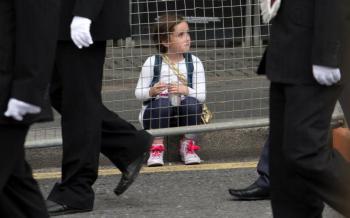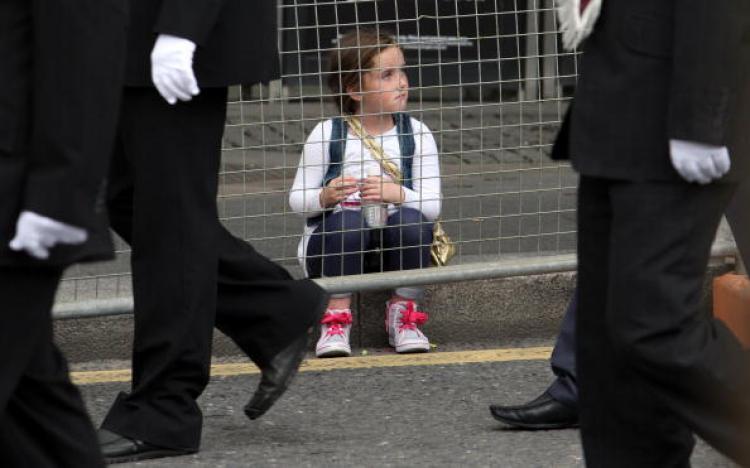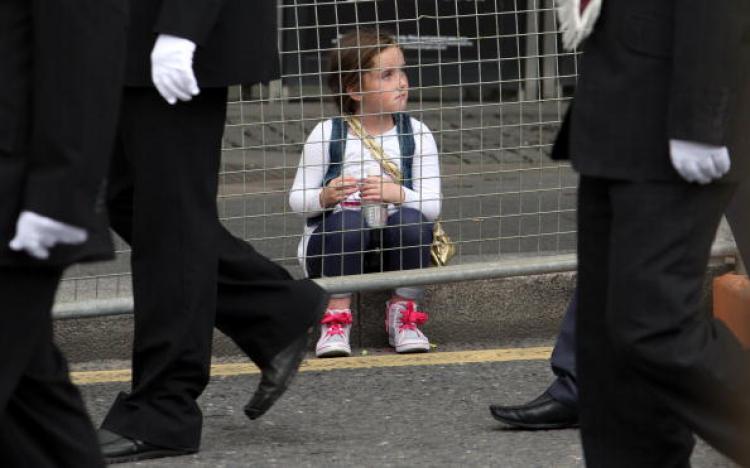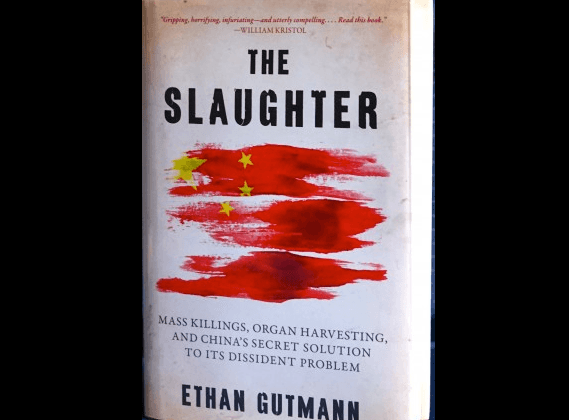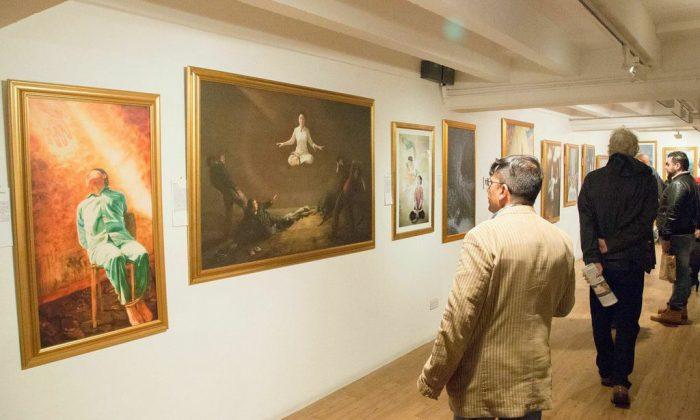Brutal violence has often been sparked by Apprentice Boys and Orange Lodge marches through the city in the past.The second largest city in Northern Ireland, Derry was on the front line of the troubles between republican Catholics and unionist Protestants. Walls and physical barriers still segregate the two communities.
Saturday’s commemoration is the largest in the Protestant calendar and marks the end of the Siege of Derry in 1689, which began when 13 apprentice boys locked the door of the city to prevent the army of the Catholic King James II from advancing.
The ending of the siege has been celebrated by marches near the old city walls for over 300 years. The continuation of this tradition has inflamed Catholic/Republican sensibilities, especially since the 1970s.
On the Friday before the marches this year, it was known that Republican prisoners in Maghaberry jail were going to make a protest about their living conditions. To maximise the effect, they intended to hold the protest on the day of the Apprentice Boys march.
The Maghaberry dispute had been going on since Easter Sunday when 28 republican prisoners barricaded themselves in the prison canteen and smashed toilets in their cells. They complained of excessive strip-searching and controlled movement.
There have been a series of marches to highlight the prisoners’ cause. According to the BBC, the previous weekend, about 100 protesters marched from west Belfast into the centre of the city.
However, a group consisting of the Irish Congress of Trade Unions, Creggan Enterprises in Derry, and the Dialogue Advisory Group helped the inmates air their grievances and believe something would be done. No details of the negotiations have been released but the prisoners called off their protest.
Tension remained as three children were slightly hurt and shocked as a bomb exploded a few streets from a school in Lurgan near the Northern Ireland capital, Belfast, on the day of the marches.
The bomb seems to have been intended to blast police officers who were to put barriers up to prevent the public from approaching another site nearer the school which they were led to believe harboured a bomb.
Later, in the evening, police studying the site had petrol bombs thrown at them by youths. No one was injured.
Twelth Anniversery of Omagh bombing
A car bomb was detonated outside a police station in Derry on August 3rd this year. Many shops on Strand Road still show the wreckage caused by the 200-pound bomb which also damaged the police station. The shops may have to be demolished and owners do not know when they can return and are disappointed at the custom they will lose.
One man has been arrested in connection with the bombing. Another man is also in custody, even though his arrest chart, according to the Irish Times, deals with events after the blast.
Dissident Republicans are thought to be responsible as the strategy of placing the device has parallels with the Omagh bomb of 1998. This bomb, on August 15th almost 12 years ago to the day, killed 29 people and the warning concerning the location of the car bomb was confused.
It is now believed that the 300 pounds of fertiliser-based explosive in Omagh was intended to be placed outside the courthouse, a symbol of British rule, and that the purpose was mainly to cause damage to property.
Parking a car in front of a courthouse would have been impossible in the years before the Good Friday agreement of 1998. With the help of the British and American governments, all political parties of Northern Ireland agreed an end to hostilities and a move towards democratic rule.
Many activists did not wish to be part of the accord, which acknowledged a continued division of Ireland. Splinter groups were formed, including the Real IRA.
According to James Dingley a former senior lecturer at the University of Ulster, who has written extensively on the Omagh bombing, a new organisation meant that inexperienced operatives were given front line tasks.
Although coded warnings were given to the authorities in a clear and disciplined way, the three men transporting the bomb left it in Market Street, around the corner from the courthouse. Due to lack of experience, they may have mis-assessed the possibility of detection.
When police safety plans went into action on the busy Saturday town centre, people were evacuated to Market Street. Most of those killed and injured were clustered around the red Vauxhall Cavalier that contained the explosive. Many were leaning on the car.
The Real IRA did not admit responsibility immediately. Some experts believe the killings were a genuine mistake as it had been a golden rule of paramilitary terrorists to limit human injuries in order to keep public sympathy for their grievance.
Orange Lodge to commemorate the Battle of the Boyne in 1690
Although Republican supporters rioted for three nights in July this year in northern Belfast and there have been many bomb blasts over the past few months, no one has been injured in the explosions and the sense of threat is nothing like that in the times of the Troubles.
The three days of riots this July in Belfast were fermented by the marching of the Orange Lodge to commemorate the Battle of the Boyne in 1690. This relates to events around the Siege of Derry in 1689 and the eventual replacing of reigning Catholic King James II with the joint monarchy of his protestant daughter Mary and her Dutch husband, William of Orange.
The 1701 Act of Settlement states that only the Protestant heirs of Sophia, granddaughter of James I, can become King or Queen and they may not marry a Catholic.
Alistair Finlay, assistant chief constable of the Police Service of Northern Ireland, said, according to the Daily Telegraph, that the challenge was to find a way to resolve the sensitive parades for good.
“This is the only way we can move away from the disorder, tensions, and fear that grips Northern Ireland every year,” he said.
Derry, first UK City of Culture
Sinn Fein, who in the past had been close to the IRA, and the Democratic Unionists, who had supported unionist paramilitaries during the Troubles, have devised a blueprint for parade management as part of the Hillsborough Agreement in February that cemented the Northern Ireland power-sharing institutions.
Another filigree root in the establishment of a more peaceful Derry was the announcement in Liverpool, on the day the Belfast riots ended, that Derry will be the first UK City of Culture.
Phil Redmond, chair of the UK City of Culture independent advisory panel, said: “The panel was unanimous in its choice of Derry-Londonderry. The programme suggested was impressive, as were the plans for community engagement, economic investment, and the development of digital technology.”
A month earlier, on June 15th, the UK Prime Minister, David Cameron, had apologised in Parliament on behalf of the nation for the Bloody Sunday massacre of January 1972 in which British troops shot dead 13 unarmed civil rights marchers on the streets of Derry and injured 13 more.
His apology came at the conclusion of the Saville Inquiry, which held that “unlawful killing” had taken place. The Saville Inquiry is the longest and most costly public inquiry in UK history.
Both Republican and Unionist politicians had appealed for calm before the Apprentice Boys Parade in Derry this year, which was attended by an estimated 15,000 people, including 140 marching bands.
